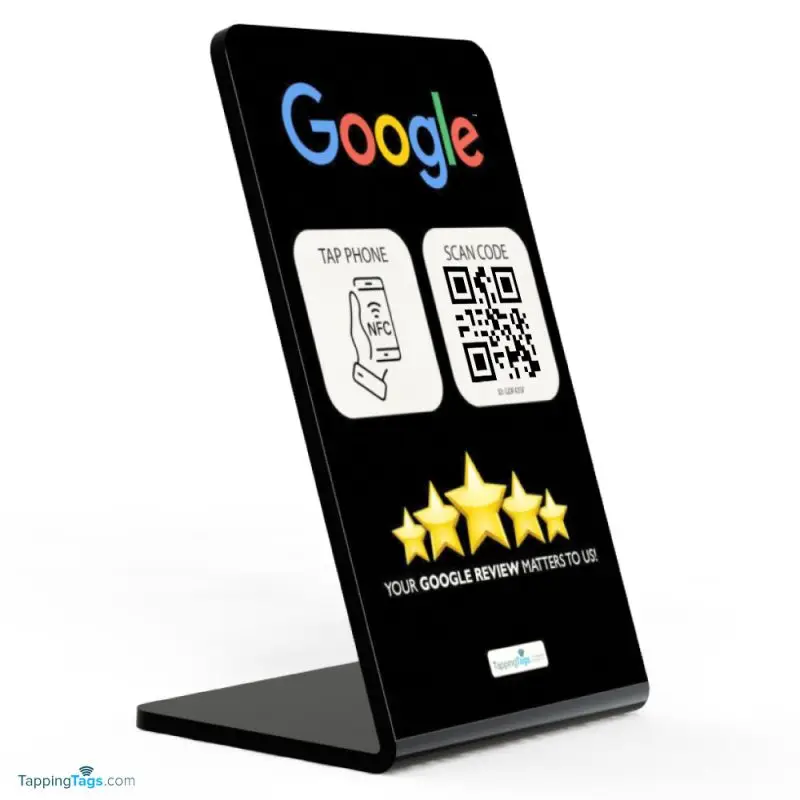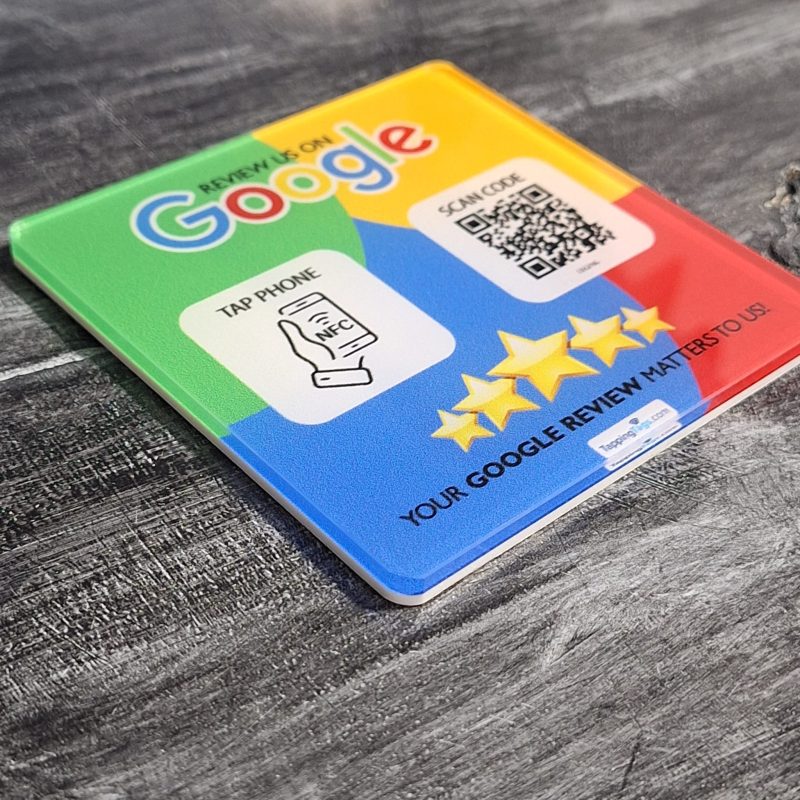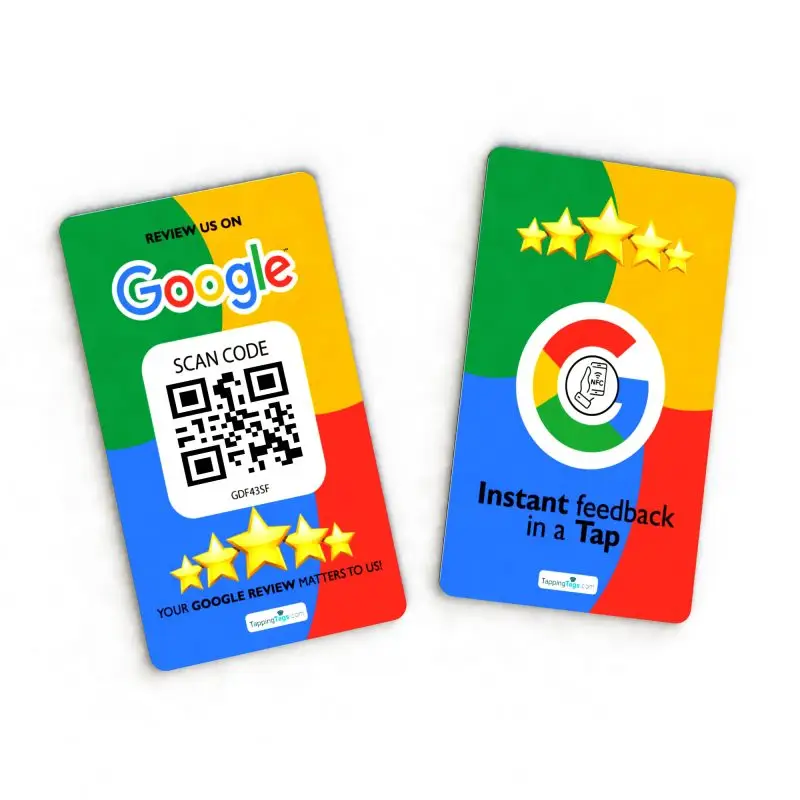Blog
How to Leverage Customer Feedback for Business Growth
In today’s fast-paced business environment, customer feedback is more than just a suggestion box; it’s a treasure trove of insights that can propel your business forward. But how do you effectively harness this feedback to drive growth? In this guide, we’ll explore actionable strategies to leverage customer feedback, focusing on innovative tools like Tapping Tags and their Google Review NFC card. Let’s dive in!
Understanding the Importance of Customer Feedback
Customer feedback is the voice of your audience. It’s like having a direct line to your customers’ thoughts, feelings, and experiences with your brand. But why is it so crucial? First, it helps you understand what your customers love about your products or services and what they think could be improved. This insight is invaluable for making informed business decisions.
Moreover, customer feedback can enhance your online visibility. When customers leave reviews, especially positive ones, it boosts your credibility and can significantly impact your SEO boost. Search engines love fresh, relevant content, and customer reviews provide just that. They help your business rank higher in search results, making it easier for potential customers to find you.
Additionally, leveraging feedback can lead to increased engagement. When customers see that their opinions matter, they are more likely to engage with your brand. This engagement can take many forms, from leaving reviews to sharing their experiences on social media, which further enhances your online presence.
Collecting Customer Feedback Effectively
Now that we understand the importance of customer feedback, how do we collect it effectively? Traditional methods like surveys and feedback forms are still relevant, but they can be tedious for customers. Enter Tapping Tags and their innovative Google Review NFC card. This contactless technology allows customers to leave feedback with just a tap of their smartphone. Imagine the convenience!
To get started, consider placing these NFC cards in strategic locations—like at checkout counters or on tables in your restaurant. When customers tap the card, they are directed to a review page where they can easily share their thoughts. This streamlined review process not only makes it easier for customers but also increases the likelihood of receiving feedback.
Another effective method is to engage with customers through social media. Platforms like Facebook and Instagram are great for soliciting feedback. You can create polls, ask open-ended questions, or even run contests that encourage customers to share their experiences. The key is to make it easy and engaging for them.
Analyzing Customer Feedback for Insights
Once you’ve collected feedback, the next step is analysis. This is where the magic happens. Look for patterns and trends in the feedback. Are there common themes in what customers love or dislike? Tools like sentiment analysis can help you quantify feedback and identify areas for improvement.
For instance, if multiple customers mention that your checkout process is confusing, it’s a clear sign that you need to streamline it. On the other hand, if customers rave about a particular product, consider promoting it more heavily or even expanding your offerings in that category.
Don’t forget to categorize feedback into actionable items. Create a system where you can track feedback over time. This will help you see if changes you implement lead to improved customer satisfaction. Regularly reviewing this data can also inform your marketing strategies and product development.
Implementing Changes Based on Feedback
Feedback is only as good as the actions you take based on it. Once you’ve analyzed the data, it’s time to implement changes. This could range from minor tweaks to major overhauls. For example, if customers are unhappy with a product feature, consider redesigning it. If they love a particular service, think about how you can enhance it further.
Communicating these changes to your customers is equally important. Let them know that their feedback has been heard and acted upon. This not only builds trust but also encourages future feedback. You can use newsletters, social media posts, or even direct emails to share updates.
Moreover, consider using the Google Review NFC card from Tapping Tags to gather ongoing feedback about the changes you’ve made. This creates a continuous loop of improvement and engagement, ensuring that your business evolves with your customers’ needs.
Enhancing Customer Engagement Through Feedback
Engagement is a two-way street. When you actively seek and respond to customer feedback, you foster a sense of community around your brand. Customers appreciate when their voices are heard, and this can lead to increased loyalty and repeat business.
One effective strategy is to publicly respond to reviews—both positive and negative. Thank customers for their positive feedback and address any concerns raised in negative reviews. This shows that you value their opinions and are committed to improving their experience.
Additionally, consider creating a loyalty program that rewards customers for leaving feedback. This could be in the form of discounts, exclusive offers, or early access to new products. By incentivizing feedback, you not only gather more insights but also strengthen your customer relationships.
Utilizing Technology to Streamline Feedback Collection
Incorporating technology into your feedback collection process can significantly enhance efficiency. As mentioned earlier, Tapping Tags offers a cutting-edge solution with their Google Review NFC card. This technology allows customers to leave feedback effortlessly, making the process seamless and quick.
Moreover, consider integrating feedback tools into your website or app. Tools like chatbots can engage customers in real-time, asking for their opinions as they navigate your site. This immediate feedback can provide valuable insights and improve the overall user experience.
Don’t overlook the power of analytics. Use tools that track customer interactions and feedback trends. This data can help you make informed decisions and tailor your offerings to meet customer expectations. The more you understand your customers, the better you can serve them.
Measuring the Impact of Customer Feedback
After implementing changes based on customer feedback, it’s essential to measure the impact of those changes. This can be done through various metrics, such as customer satisfaction scores, Net Promoter Scores (NPS), and overall sales performance.
Regularly reviewing these metrics will help you understand if your efforts are paying off. Are customers happier? Are sales increasing? If not, it may be time to reassess your strategies and gather more feedback to identify new areas for improvement.
Additionally, consider conducting follow-up surveys after implementing changes. This will give you direct insight into how customers perceive the adjustments and whether they feel their feedback has been valued.
Creating a Feedback Culture in Your Business
Finally, to truly leverage customer feedback for business growth, you need to create a culture that values feedback at all levels of your organization. Encourage your team to seek out customer opinions and share them regularly. This can be done through team meetings, internal newsletters, or dedicated feedback sessions.
Moreover, train your staff on the importance of customer feedback and how to respond effectively. When your team understands the value of feedback, they are more likely to engage with customers and encourage them to share their thoughts.
Incorporating feedback into your business strategy should be an ongoing process. Regularly revisit your feedback collection methods, analysis techniques, and implementation strategies to ensure they remain effective. By fostering a feedback culture, you’ll not only improve customer satisfaction but also drive sustainable business growth.
Conclusion
Leveraging customer feedback is a powerful strategy for business growth. By understanding its importance, collecting it effectively, analyzing it for insights, and implementing changes, you can create a cycle of continuous improvement. Tools like Tapping Tags and their Google Review NFC card can streamline this process, making it easier for you and your customers. Remember, feedback is not just a tool; it’s a conversation that can lead to lasting relationships and success. So, are you ready to tap into the power of customer feedback?
FAQs
What is customer feedback?
Customer feedback refers to the opinions and insights provided by customers about their experiences with a product or service. It can be collected through various methods, including surveys, reviews, and direct communication.
How can I collect customer feedback effectively?
Effective methods for collecting customer feedback include using tools like NFC technology, social media engagement, and traditional surveys. The key is to make the process easy and accessible for customers.
Why is customer feedback important for business growth?
Customer feedback is crucial for business growth because it provides insights into customer preferences, helps identify areas for improvement, and enhances online visibility, ultimately leading to increased sales and customer loyalty.
How can I analyze customer feedback?
Analyzing customer feedback involves looking for patterns and trends, categorizing feedback into actionable items, and using tools like sentiment analysis to quantify insights. Regularly reviewing this data can inform business decisions.
What role does technology play in collecting customer feedback?
Technology streamlines the feedback collection process, making it more efficient. Tools like NFC cards and feedback analytics software can enhance the customer experience and provide valuable insights for businesses.
-
 Google Review NFC and QR Code Acrylic Stand
Rated 5.00 out of 5
Google Review NFC and QR Code Acrylic Stand
Rated 5.00 out of 5$75.00Original price was: $75.00.$38.50Current price is: $38.50. -
 Google Review NFC & QR Code Acrylic Tag with Sticker
Rated 5.00 out of 5
Google Review NFC & QR Code Acrylic Tag with Sticker
Rated 5.00 out of 5$49.00Original price was: $49.00.$27.00Current price is: $27.00. -
 Google Review NFC and QR Code Card - Tap or Scan
Rated 5.00 out of 5$18.90 – $98.90
Google Review NFC and QR Code Card - Tap or Scan
Rated 5.00 out of 5$18.90 – $98.90
